Poetry, literature and the Russian Revolution
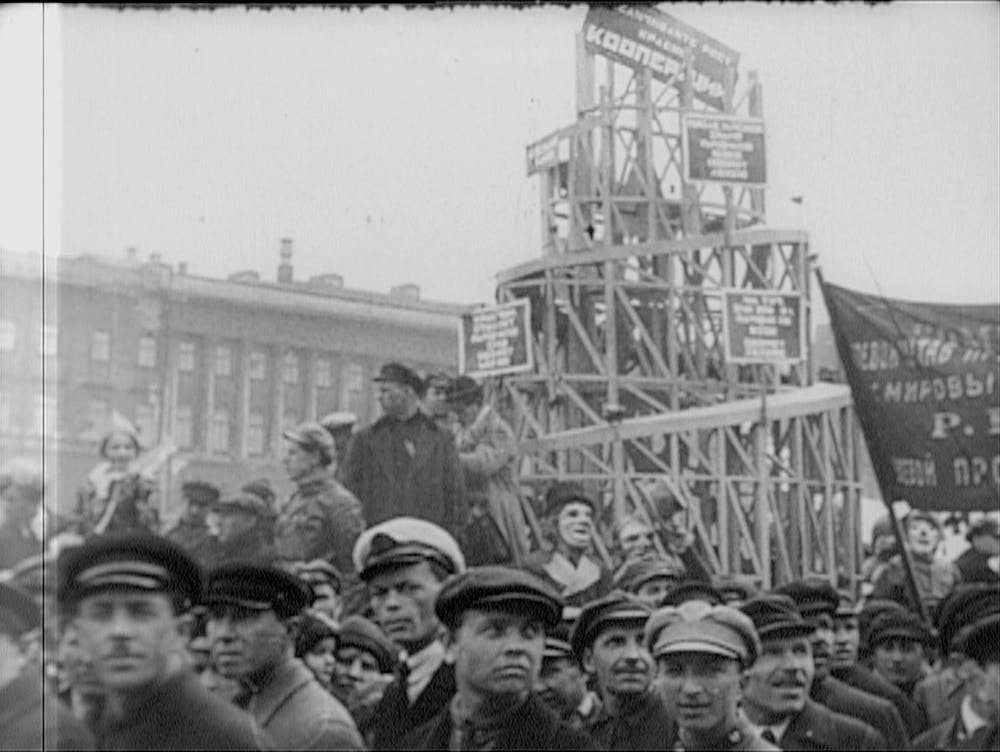
Where society is riven by sharp tensions and conflicts, we can expect a similar fracturing in the world of art. Such was the case during the Russian Revolution of 1917—an event that truly shook the world, not just in politics, but also in art.
In the space of a year an entire society—the old, despotic order of tsarism—was uprooted and replaced by a new form of society under the leadership of the working class. In this there were clear winners and losers. Most established artists and writers of the pre-revolutionary period belonged to the middle and upper classes. Among these people, the prevailing sentiments towards the revolution were disgust, anger and despair.
On the other side were those who rallied to the revolution. On this side too, very few of the leading figures came from the working class. Yet over time they could see beyond what to the others seemed like no more than ugly chaos, towards the hope and inspiration of a new, better, society being born.
Just as in the other combatant countries, the outbreak of World War I in 1914 was greeted in Russia with a wave of patriotic enthusiasm. Crowds paraded through the streets singing the praises of the tsar and the glories of “mother Russia”. But enthusiasm for the war didn’t last. As the carnage on the front grew, and it became clear that it wouldn’t all be over in a few weeks or months, the discontent among the mass of workers and peasants reached new heights.
The tsarist regime was determined to wage the war to the end. The army swelled to more than 10 million, with almost 2 million dead. Workers slaving away in war industries behind the lines were forced to get by on starvation rations.
In late February 1917, the government announced yet another cut to the bread ration. On International Working Women’s Day—23 February on the old Russian calendar—women workers in Petrograd struck in protest. They marched around to other workplaces, calling on the workers there to join them. The crowds quickly grew. Over the course of five days of struggle, the strikes and protests spiralled out of the regime’s control. Tsarism’s time was up. The atmosphere among the mass of workers, peasants and soldiers was jubilant.

The feelings of joy and exhilaration are expressed well by Mikhail Kuzmin in his poem “Russian Revolution”:
It seems a century has passed, or just one week!
What week? A single day!
...
A day before, people were huddled in a gloomy crowd,
jumping aside from time to time and shouting vaguely,
while the Anichkov Palace fired volley after volley
over its traitorous shoulder in a red and vacant cloud.
News (so routine!) crawled by like snakes:
“Fifty ... Two hundred killed ...” Cossacks advance.
“They will not shoot! ... Refuse ...”
The governmental snitches hiss, their collars raised.
Today ... Today the rising sun
saw all the gates swung open in the barracks.
No sentinels, policemen, pickets,
as if there never had been any guards or guns.
There’s music playing. Fighting’s broken out,
but, somehow—not the faintest hint of fear.
The troops have chosen freedom! God—my God!
Everyone’s ready to embrace each other.
Remember this—this morning, after that black night—
this sun, this polished brass.
Remember what you never dreamt would come to pass
but what had always burnt within your heart!
...
Remember the first dispatches from the Soviets,
the dizzying, “For all, for all, for all!”
It’s like telling a starving man, “Eat!”
And him replying, “I’m eating!” with a smile.
The “for all!” that Kuzmin expresses here wouldn’t last. Despite the Soviets of Soldiers’, Workers’ and Peasants’ Deputies having complete control of the country in the days following the revolution, the moderate leaders handed power back to the representatives of the bourgeoisie.
Thus was established, out of the remnants of the tsarist State Duma, the so-called Provisional Government. This government of the bourgeoisie set about restoring order. For them, and their supporters in the middle and upper classes, this meant three things: first, continuing the war to ensure Russia didn’t lose out in the imperialist scramble for resources and territories; second, pushing back the gains made by workers—including the eight-hour day that had been demanded and in many cases unilaterally enacted already; and third, protecting the existing structure of land ownership in Russia, which was then under threat from an insurgent peasantry.
These three policies put the Provisional Government on a collision course with the mass of workers, peasants and soldiers. The Bolshevik slogan “Peace, Land and Bread” expressed well what the revolution meant to them. They expected a rapid end to the war, an improvement in economic conditions and a transfer of the estates of the Russian nobility to the peasants. Instead, in the aftermath of the February Revolution, they got more of the same things they had been forced to endure under the tsar.
Following Lenin’s return to Russia in April, the Bolsheviks began agitating for a transfer of power to the soviets. This demand struck an immediate chord with the most militant workers in industrial centres like Petrograd and Moscow. Over time, support for the Provisional Government eroded away to nothing, while support for the Bolsheviks grew in leaps and bounds.
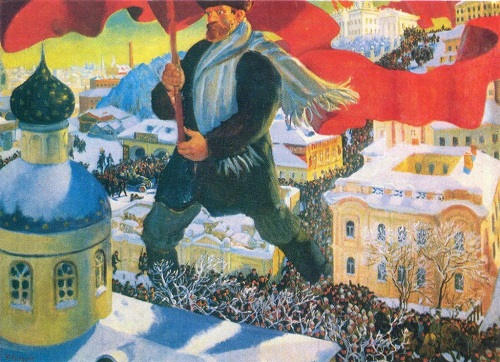
Mainstream historians argue that the October Revolution was a Bolshevik coup. This was far from the case. The fact that the revolution could be carried out so quickly and easily, with relatively little bloodshed, was a reflection of the mass support that the Bolsheviks and their allies in the soviets enjoyed. The transfer of power to the soviets was a genuinely popular measure. Neither was the revolution, as is sometimes claimed, the result of workers’ “blind faith” in the demagogic Bolshevik leaders. The level of political debate and discussion in Russia in the course of 1917 was perhaps unlike anything seen in history before or since.
This passage from Boris Pasternak’s autobiographical sketch “People and Propositions” gives a taste of it:
“A multitude of excited, keenly watchful souls would stop one another, flock together, form crowds and think aloud ‘in council’, as they would have said in the old days ... The infectious universality of their elation blurred the boundaries between man and nature. In that famous summer of 1917, in the interval between two revolutionary periods, it seemed that the roads, the trees and the stars were rallying and speechifying right along with the people. The air was seized from end to end with fervid inspiration that blazed for thousands of miles—it appeared to be a person with a name, to be clairvoyant and possessed of a soul.”

Of course, a sense of exhilaration at the sight of a politically awakened people was one thing. Support for a regime of genuine “people power” like the soviets was quite another. In the aftermath of the October Revolution, a sharp divide opened up between those poets and writers who stood on the side of the workers, peasants and soldiers in their attempt to build a new society, and those who saw in it merely barbarism and anarchy.
This divide mapped pretty neatly onto class. Those who belonged to the working class were exultant. The poem “Decrees”, by Alexey Kraysky, helps explain the immense popularity of the new Soviet regime among workers and the poor generally:
Through mud, over puddles, she gambols,
selling newspapers—silly young lass.
Her voice is as bright as a sparrow’s:
“Decrees! Decrees! Decrees!”
First: “All Power Goes to the Soviets!”
Next: “Peace to All the World!”
The grandes dames just cannot get over it—
her cries rattle their nerves.
The generals’ epaulettes quiver.
Out of fear? Laughter? Who knows?
The dandies snort, “They’ll never
last, these Soviet dogs.”
The lass doesn’t care—hawks her papers
left and right ... Wait, don’t you see?
Silly girl, read them and realize:
these decrees are for you and for me.
Dad’s at war, choking on gas.
Mum works in consumptive fumes.
They hear your indifferent phrase
and rush to read the news.
They imagine their daughter a commissar
in a land where workers live free ...
Silly girl, don’t you realize?
These decrees are for you and for me.
It was Vladimir Mayakovsky, however, who supplied the truly anthemic tributes to the October victory. His futurist aesthetic attuned him to the deeper rhythms and significance of the revolution—something that other established poets, who were by and large oriented to Russia’s peasant traditions, largely missed.
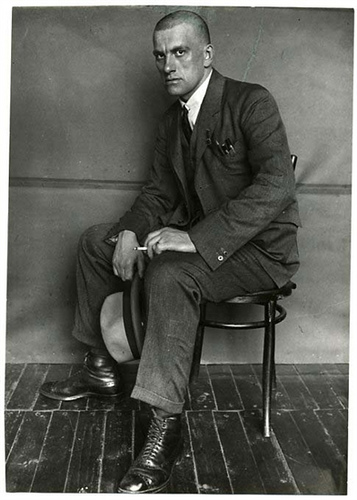
His poem “Our March”, written in December 1917, conveys the immensity of the imaginative horizons that opened up in the first heady months of soviet power:
Let the squares ring to the tramp of revolt!
Lift your heads’ glorious mountain range higher!
We’ll cleanse all the cities around the world
with a flood even greater than Noah’s.
...
Is our treasure, our gold not the loftiest thing?
Can we ever be stung by the wasp of a bullet?
Our weapon’s the songs that we sing.
Our voices are our gold bullion.
...
Look up! The skyful of stars is bored!
We weave our songs without the sky.
Hey, you there! Yes, you, Great Bear!
Demand we be taken to heaven alive.
Drink up the joy! Sing!
The veins’ spring’s sprung.
Heart! Fight! Ring!
Our breasts are the copper of great kettledrums.
On the other side of the class divide, those poets and writers who identified with the old regime or with the bourgeois liberals of the Provisional Government were apoplectic with rage.
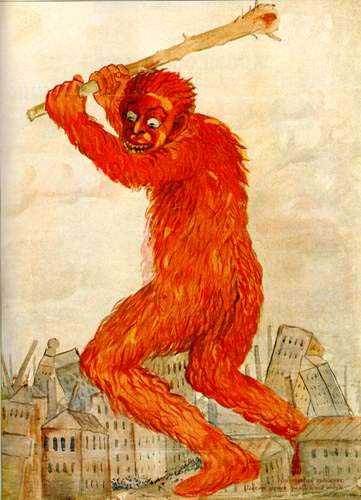
The most viciously anti-Bolshevik works came from the pen of Zinaida Gippius. In the months following the October Revolution, she wrote a series of poems denouncing the new regime and bemoaning the fate of the bourgeois government that she hoped could tame the country. In the poem “Now”, written in November 1917, she wrote:
The streets are slippery and vile—
disgrace!
Life is so shameful, so incredible
these days!
We all lie bound, bespattered,
on every street.
Our foreheads are all smeared
with sailors’ spit.
...
We’re all a bunch of homeless curs—
completely stranded!
The Bolsheviks tore up the rails
with sooty hands ...
Unsurprisingly, Gippius left Russia in 1919 and settled among fellow émigrés in Paris. Also unsurprisingly, she later developed sympathies with the Nazis. The symbolist poet Alexander Blok bitingly conveyed the mood of anti-Bolshevik poets, writers and intellectuals in the aftermath of the October Revolution in his work “The Fed”:
Thus rave all the fed,
Thus longs the satisfaction of important bellies,
Their trough is overturned,
And confusion is in their foul pen.
The sharp contradiction between the elation of the workers, peasants and soldiers who made the Russian Revolution, and the vicious hatred of the Soviet regime from the middle and upper classes, was a precursor to outright civil war. It wasn’t just the reactionaries in Russia who set themselves the task of overthrowing the Soviets “by any means necessary”. They were joined in their efforts by the entire capitalist world.
It was a bitter struggle. It appeared at various points that the Soviets must succumb. The most conscious, militant workers were the first to be drawn into the Red Army. Many died at the front. This left a massive gap in the organising capacities of the regime. The economy collapsed. The cities were devastated by unemployment, starvation and disease. The population of Petrograd went from 2.3 million in 1917, to just 722,000 by the end of the civil war.
The poetry and literature of this period couldn’t ignore the immense hardships suffered by the Russian people. All this, of course, provided ample material for its opponents. In right-wing literature, the Bolsheviks were universally portrayed as bloodthirsty monsters intent only on murder and destruction.
Yet other once hostile poets and writers began, over time, to soften their stance. Such was the case, for example, with Alexander Blok, who was perhaps the most prominent of Russian poets of the prewar period. In an article from January 1918 on the “Intelligentsia and the Revolution”, he urged his fellow poets, writers and thinkers to listen to the “music” of the revolution with “every cell of your body, with every beat of your heart, with every stirring of your conscience”.
Blok’s poem “The Twelve”, written in January 1918, was praised by Leon Trotsky as “the most significant work of our epoch” which would, in his words, “remain forever”.
The poem follows a patrol of 12 members of the Red Guard, marching at night through the empty, snow-swept streets of Petrograd. The guardsmen are portrayed as violent and crude. At the centre of the poem is an incident in which they shoot at a carriage on the street in which a prostitute who one of them is in love with is sitting with another man. The man escapes, while the prostitute, Katya, is shot dead. Later, the guards renew their spirits by breaking into a wine cellar.
Despite all this, it’s clear Blok’s sympathies lie with the guards, rather than the various symbols of the old order that are scattered through the poem. They may be violent and crude, but they are the bearers of something hopeful and new. The bourgeoisie appears, in contrast, as a “mangy mongrel” cowering in the blizzard:
A bourgeois’s standing at the crossroads,
nose buried in his collar.
And near him, tail between its legs,
a mangy mongrel cowers.
The bourgeois stands, a hungry cur,
a question mark, a question begged,
behind him crouches the old world—
a mongrel, tail between its legs.
But it’s at the end of the poem that Blok really doubles down on the symbolism. The bleakness and violence of everything preceding it adds maximum force to the moment of “reveal”:
... From street to street with sovereign stride ...
“Who’s there? Don’t try to hide!”
But it’s only the wind playing
with the red banner ahead.
Cold, cold, cold drifts of snow.
“Who’s there? No hiding now!”
But it’s only a starving hound
limping along behind.
...
“Who’s that waving our red banner?”
“Wherever I look—it’s dark as pitch!”
“Who’s that flitting from corner to corner
always out of reach?”
...
... From street to street with sovereign stride,
a hungry cur behind them ...
While bearing a blood-stained banner,
blizzard-invisible,
bullet-untouchable,
tenderly treading through snow-pearls,
crowned with snowflake roses—
up ahead—is Jesus Christ.
The twelve Red Guards are, then, recast as the modern incarnation of Jesus’ twelve apostles. Their march through the freezing, blizzard-swept streets of Petrograd is, though they themselves don’t realise it, a march towards the redemption of humanity. The modern Jesus, in Blok’s poetic vision, carries the red, “blood-stained” banner of communism.
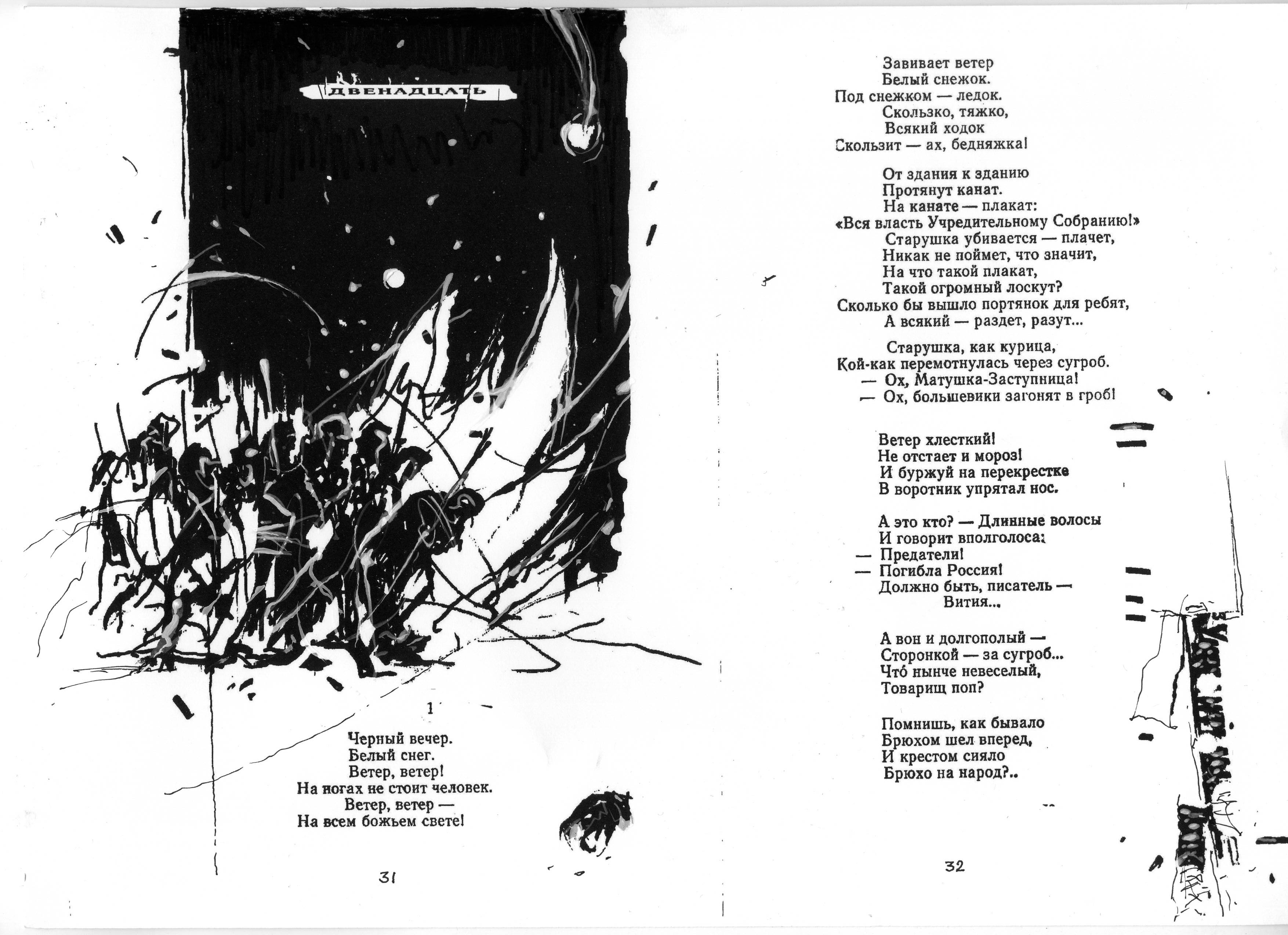
The final victory of the Soviets in the civil war in 1922 brought a brief period of respite in which the fledgling cultural scene could flourish. The regime saw the value in art and culture as a means of promoting the human side of the construction of a socialist society. Writers and artists such as Mayakovsky put themselves at the centre of these efforts—producing works that, in contrast to the art of pre-revolutionary times, had a genuinely mass audience among workers.
The achievements of this period are widely recognised, even by some of the most anti-Communist historians and critics. What distinguished modernist artistic movements in Russia from their counterparts in the rest of the developed world was that they were forced to confront seriously the interface between art and everyday life.
Mayakovsky’s work of this period, particularly the more than 600 posters he made for the ROSTA news agency, provide an example. These posters were a form of basic propaganda and education, displayed in windows of the Russian Telegraph Agency in towns and cities across Russia. In the days before radio and television, the posters were an important means for the Soviet government to communicate with the mass of workers and peasants, to counter right-wing propaganda and to rally people to struggle.
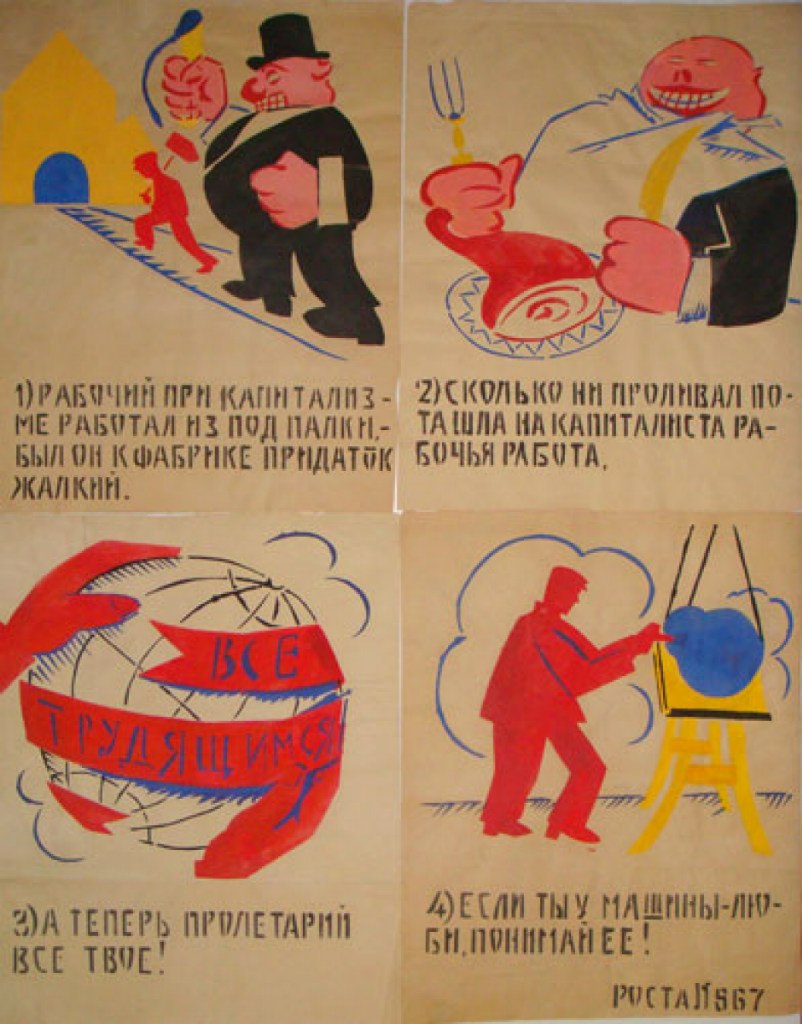
Later, with reference to his contributions to Soviet work-safety campaigns, Mayakovsky wrote: “I understand a writer’s task to include calling people to obey slogans: not to put their hands in machines, to prevent someone getting hit by a hammer. With my pen and my rhymes I encourage such things, and this is no less important than the most inspired subjects of long-haired lyric poets”.
In 1923 Mayakovsky joined with other Soviet writers and artists to found the journal LEF—the Left Front of the Arts. The journal’s declaration—“Comrades, organisers of life”—from May Day in 1923 gives a sense of what they aimed to achieve: “On this day of demonstration, the First of May, when proletarians are gathered on a united front, we summon you, organisers of the world: Break down the barriers of ‘beauty for beauty’s sake’; break down the barriers of those nice little artistic schools! Add your strength to the united energy of the collective!”

This was also a time in which debate and discussion about the future of art in a communist society flourished. Trotsky’s work Literature and Revolution provides a good summary of the terrain on which these debates played out. Trotsky took aim at those poets, writers and artists who had gathered under the banner of the “Proletkult”. The members of this movement believed that, in line with the economic rupture within Soviet society, which accelerated under the conditions of war communism, it was necessary to make a clean break with the bourgeoisie on the level of culture.
In reply, Trotsky pointed out that neither the economic nor the cultural transition to socialism could be expected to occur overnight. In the realm of art, the impossibility of making a clean break with bourgeois culture was clear. The bourgeoisie was able to develop its own cultural and artistic traditions through centuries under conditions of feudalism before it challenged for political power. In contrast, due to the state of material poverty in which it is kept within capitalism, the working class’s challenge for power must occur before it has any real cultural traditions of its own.
Trotsky argued that a genuine break with bourgeois culture could come only after it had first been sufficiently grappled with and its best elements appropriated. It might be surprising to some, for example, that during an era of rapid collectivisation of economic life, Trotsky called for a strengthening, through art, of individuality among the mass of workers and the poor. He wrote, “[I]t is just such heightening of the objective quality and the subjective consciousness of individuality that is the most valuable contribution of the cultural advance at the threshold of which we stand today”.
This makes sense. The purpose of socialism has always been to allow the full flourishing of genuine individuality and personality through participation in a collective culture. Trotsky was opposed, for the same reason, to any top-down attempt by the party to dictate what constitutes good art. The working people of Soviet society had to be allowed to determine their own routes to cultural awareness, without being shackled by any aesthetic “party line”.
Unfortunately, the period of experiment and innovation in Soviet cultural life was short lived. From the mid-1920s onward, the increasing bureaucratisation of the state developed into a full-blown counter-revolution under the leadership of Joseph Stalin.
For the opponents of the Soviet regime, this was proof that the revolution was rotten from the start. A mainstream, anti-Communist history of the poetry and literature of the revolution would create an essential continuity between the early anti-Bolshevik works of writers like Zinaida Gippius, right-wing works of the civil war period like Ivan Bunin’s Cursed Days and later works like Solzhenitsyn’s The Gulag Archipelago.
This runs counter, however, to the testimony of those many poets, writers and artists who witnessed the developments first hand, and saw a clear break between the early days of the Soviets and the beginnings of the Stalinist dictatorship that followed. Trotsky’s call, in 1924, for the party to adopt a light-handed approach to allow for the free and full flowering of the arts is a world away from the subsequent state-enforced aesthetic conformity to the standards of so-called “socialist realism”.
To consolidate his rule, Stalin had to wage a war against the revolutionary legacy of 1917. This involved, above all, the persecution of those Bolshevik leaders who, like Trotsky, adopted an oppositional stance. And it involved suppressing all those aspects of Soviet life in which the initiative of the masses could find an outlet.
Art was, in this context, a prime target for repression. For writers like Mayakovsky, who had fought so hard to turn the high hopes of the October Revolution into reality, it was a difficult time. Mayakovsky himself committed suicide in 1930, and many others were persecuted and imprisoned.
Nevertheless, poetry and literature didn’t fall completely silent during this time. Given the contradictions of Soviet society—particularly the growing gulf between the bureaucratic ruling class and the mass of ordinary people who toiled away in much the same way as they had done under the tsar—it was inevitable that at least a murmur of resistance would remain. Works like those of Solzhenitsyn are part of that. But to stop there, with someone who stood entirely in the anti-Communist camp, doesn’t do justice to the reality of the defeat that Stalinism represented.
Among those writers who attempted to come to terms with the horrors of Stalinism, without, in doing so, breaking with the legacy of October and of genuine socialism, the works of Victor Serge are unsurpassed. Serge came to the revolution as an outsider, both politically, as an anarchist, and geographically, as someone who grew up in Western Europe, mostly in Belgium and France, and arrived in Russia only in January 1919.
His many novels are largely autobiographical and give a full account of the twists and turns of the struggle in Russia from the earliest days of the Soviet regime through to the Stalinist reaction and terror of the 1930s. Serge himself was a victim of this terror. As a member of the “Left Opposition” under Trotsky, he was arrested in 1933 and imprisoned until his exile from Russia in 1936. Without a high-profile campaign for his release by supporters in Western Europe, it’s likely he would never have made it out alive.
In works such as Midnight of the Century and The Case of Comrade Tulayev, Serge didn’t hold back in his depiction of the inhuman cruelty of the Stalinist bureaucracy. But what is striking about them is the extent to which, despite the depictions of suffering they entail, the focus remains on the innate human capacity for resistance. Thus the final chapter of Midnight of the Century, titled “The Beginning”, ends with a vision of renewal—of the “Russian earth, the tortured earth of the revolution ... its countless living prisoners, its countless executed ones in graves, its construction sites, its masses, its solitudes and all the seeds germinating in its womb”.
Elsewhere, Serge asked, “[W]hat greater injustice can be imagined towards the Russian revolution than to judge it in light of Stalinism alone? Of Stalinism which emerged from it, it is true, only to kill it, but in the course of thirteen or fifteen years of struggles, by favour of the defeat of socialism in Europe and Asia!”
Today, poetry and literature, and the arts more generally, are suffering from the neglect of a system that subordinates everything to the dictates of the capitalist market. This isn’t how it should be. Poetry and literature have, from the very beginnings of human history, been central to how we come to understand ourselves and the world. They provide a reservoir of meaning to nourish the imagination—to comfort, to inspire and to challenge us.
Without them, our lives become flatter and drabber, and we risk losing our ability to see beyond our contemporary reality—to imagine a better world. “Art must not be concentrated”, Mayakovsky wrote, “in dead shrines called museums. It must be spread everywhere—on the streets, in the trams, factories workshops, and in the workers’ homes”. That’s something that the Soviet regime strove for in the years before the Stalinist reaction set in. And it’s something that we need to continue to fight for today.